Bill Wilson, Always A Seeker
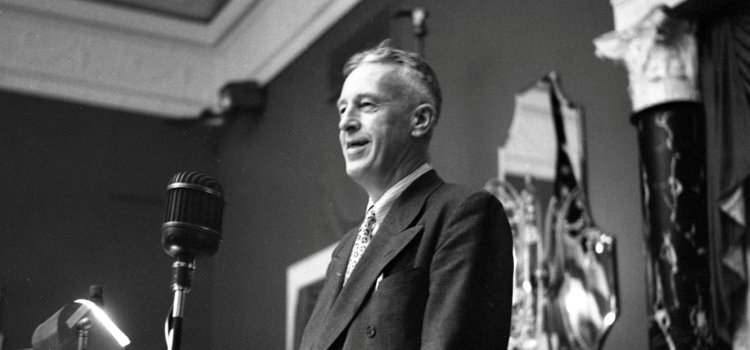
Our book is meant to be suggestive only. We realize we know only a little.
Big Book, page 164
Research has already come up with significant and helpful findings. And research will do far more.
Bill’s speech at the 1965 General Service Conference
By Thomas B.
Introduction
There have been a number of authoritative biographies written about Bill Wilson, the co-founder of AA, since the first biography, Bill W., was published by Robert Thomsen in 1975, four years after his death. Thomsen’s biography was primarily based on a series of autobiographical tape recordings that Bill started dictating in 1954 at age 59. As well, it drew upon the voluminous writings of Bill and extensive interviews with his then living relatives.
Pass It On, the official biography by Alcoholics Anonymous, was published in 1984. Two biographies appeared in 2000, Francis Hartigan’s Bill W and Bill W. and Mr. Wilson written by Matthew J. Raphael. Susan Cheever’s My Name Is Bill was published in 2004.
Bill, of course, was also a prolific writer, who drew heavily upon his experience, when writing the first 164 pages of Alcoholics Anonymous, Alcoholics Anonymous Comes of Age, and Twelve Steps and Twelve Traditions. He also wrote numerous articles for the Grapevine. Some of his voluminous correspondence has been published in As Bill Sees It.
In addition, the academic history of Alcoholics Anonymous, Not God, by Ernie Kurtz, published in 1979 as a doctoral dissertation from Harvard University — with an expanded edition updated in 1991 — includes numerous heavily-footnoted details about many aspects of Wilson’s life.
The most recent biography about Bill W. I’ve read is Raphael’s. I especially resonate with it, because it deals with both the publicly known Bill W. and what is known about the private life of Mr. Wilson. As the dust jacket notes:
In quest of a more historically accurate and complete account, Raphael separates facts from fiction and finds reason to doubt the literal truth of some foundational AA stories… What emerges is an unvarnished portrait of a charismatic man and social visionary, whose true greatness is all the more apparent in view of his human imperfections.
Aldous Huxley, notable philosopher and novelist, opined that Bill Wilson was the greatest social architect of our time, not so much for the Big Book and Steps, but for conceiving AA’s egalitarian general service structure. Time Magazine lists him in the top 20 or the most influential people of the 20th Century.
I’ve been privileged to read most of these materials. I have used him as a model for my own recovery and evolution as a sober person. This essay will explore what I believe to be the hallmark characteristic of his life both before and after sobriety – he was essentially always a seeker.
Early Life and Young Adulthood
Bill and his younger sister, Dorothy, were raised by his mother’s grandparent’s, Fayette and Ella, after the traumatic divorce of their parents when they were children in 1905. Their alcoholic father, Gilman, abandoned them, moving to Calgary, Canada. Shortly thereafter, their mother, also deserted the two young children to pursue a degree in osteopathy in Boston, becoming one of the first women doctors in America. They both, therefore, could be referred to as Adult Children of Alcoholics, whose childhood was traumatized by the dysfunctional family illness of addiction.
As a youth, Bill was especially influenced by his grandfather, who became a surrogate father for him. Fayette instilled in him a love of reading, which he often did into the wee hours of the night; a love for science, buying for him wireless radio kits; and a love of music, procuring for him both a violin and a cello.
Throughout his entire life, Bill would lose himself in projects and extensive research into areas that intrigued him. Under the influence of Fayette, he was driven from an early age to explore and master subjects that caught his fancy. An early example was his obsessive study with how Australian aboriginals fashioned boomerangs. Around age 11, he spent some six months on a project to successfully produce a working boomerang. To his, as well as Fayette’s delight, he succeeded.
During high school he was quite popular and active in extra-curricular activities, despite being self-conscious about not having parents and being a gawky, tall teenager with protruding ears. However, a second traumatic event occurred when his high school sweetheart, Bertha Bamford, died unexpectedly in a New York hospital in the fall of their senior year.
An avid reader, Bill’s far-ranging mind can be discerned from the list of books at Stepping Stones, Lois and Bill’s home in Bedford, NY. It has a wide range of books dealing with history, philosophy, psychology, sociology, and general medicine to include books about psychiatry and addiction. As well, there are books dealing with the world’s major religions to include accounts of mystical and non-sectarian spiritual events.
His proclivity for in-depth research and exploration fostered his early career in finance, when he became one of Wall Street’s first securities analysts. During 1925 he and Lois gave up their jobs and Brooklyn apartment, taking off on a sidecar-equipped motorcycle for a several month trip to investigate General Electric in Schenectady.
For Bill this was an exciting adventure; for Lois it was an early attempt to control his drinking, which at times had become problematic. This was the first of several trips trips they took over the next several years to investigate companies for profitable investment.
On March 31st, during a 1926 trip to Tampa, FL, Lois notes in her privately published, Diary of Two Motorcycle Hobos, the following paragraph from one of Bill’s periodic reports to Frank Shaw, a Wall Street investor. It speaks volumes about Bill’s penchant for meticulous research:
This trip has given me the time and material to indulge in what to me is the greatest pastime in the world — the construction of theories about things. Nothing seems to give me as great joy as evolving from a set of facts, some kind of theory… and then seeing the theory justified.
All throughout his life Bill engaged in seeking to do this kind of diligent research and exploration.
After Bill Left AA, What?
After turning over the day to day management of AA to the AA Fellowship in 1955, Ernie Kurtz notes on pages 136-8 of Not God: A History of Alcoholics Anonymous, that Bill’s interest in three controversial issues, resulted in considerable conflict between Bill and AA’s Board of Trustees. These three issues were spiritualism, Niacin and LSD. During the 1950s and 1960s, Trustees were concerned about Bill using his status as AA’s co-founder to promote these “outside issues.”
Kurtz, however, also notes in a 1989 magazine article, Drugs and the Spiritual: Bill Takes LSD, that as far as Bill was concerned, his overarching goal was to find additional ways to help alcoholics recover:
In a very real sense, the story of Bill’s sobriety details the turning of his thirst for alcohol into a thirst for alcoholics… But Bill also learned, in those first twenty years, that the main obstacle to drunks “getting” AA was “spiritual.”
Let’s examine these three contentious “outside” issues.
Spiritualism
Here’s a rather startling statement from Bill’s biographer, Matthew J. Raphael, “ . . . it might be said that for the co-founders at least, AA was entangled with spiritualism from the very beginning.”
Today, this is a somewhat puzzling statement, but it needs to be put in context with the era during which they both came of age. During the late 19th century and continuing throughout the first third of the 20th century, there was considerable interest among both the general populace of North America, as well as esteemed psychologists, including Jung, Freud and James, regarding spiritualism and the occult.
Both Bill and Dr. Bob were most interested in parapsychology, the study of paranormal mental phenomena, often excluded from study by mainstream psychology. Paranormal phenomena include hypnosis, telepathy, clairvoyance, remote-viewing, etc. Letters from Bill to Lois, while he stayed in Akron with Dr. Bob and his wife, Anne, during 1935 include several references to seances they conducted, seeking to contact departed spirits.
In their Stepping Stones home, Bill and Lois had what was referred to as the “Spook Room,” where they regularly conducted seances or utilized a Ouija Board to get messages from beyond this earthly realm. In the Spook Room there are several books relating paranormal investigations.
Bill considered himself an “adept”, someone with psychic capacity, or clairvoyant powers. Pass It On, includes the description of a 1944 occasion, when Bill and Lois were in Nantucket, where at breakfast Bill “channeled” several former residents long dead. Ernie Kurtz notes that Bill at times conflated spiritualism with spirituality, sometimes using the terms interchangeably.
LSD and Niacin
Through his friendships in the mid-1940s with the Irish-American mystic, Gerald Heard and notable author Aldous Huxley, Bill became acquainted with the promising work of two Canadian psychiatrists, Drs. Humphrey Osmond and Abram Hoffer. They reported success, treating alcoholics and schizophrenics in Canada’s British Columbia, using both LSD and Niacin, Vitamin B-3.
No doubt Bill’s interest in spiritualism influenced his willingness to experiment with LSD himself. Heard guided Bill on his first altered-consciousness LSD “trip” in 1956. I wrote extensively about Bill’s experimentation with LSD in this May 10, 2015 article for AA Agnostica, Bill Wilson’s Experience With LSD.
AA’s official biography Pass It On, reports, “Bill was enthusiastic about his experience with LSD; he felt it helped him eliminate barriers erected by the self, or ego, that stand in the way of one’s direct experience of the cosmos and of God.”
I note in the article above that after 20 years experience in AA, Bill became convinced that the biggest block to recovery in AA was resistance to the “spiritual” component:
By the mid-1950s, when he was writing AA Comes of Age, Bill was acutely aware that there were many people unable to experience a spiritual experience – or psychic change as described in Appendix II of the Big Book – sufficient to bring about recovery from alcoholism. Consequently, he was constantly searching for effective ways to reach those suffering alcoholics who did not respond to AA’s program as prescribed in the Big Book.
Some 60 years after psychedelics were first successfully used to treat alcoholism, recent experiments — curtailed for decades by America’s unsuccessful War on Drugs — are again validating that psychedelics might, indeed, be useful in the treatment of addiction and mental illnesses. This renewed research work is effectively summarized in this New Yorker article, The Trip Treatment.
One prominent expert in the treatment of addictions, Dr. Gabor Maté, theorizes that untreated PTSD from childhood trauma is a critical factor in healing some individual’s addiction. For the past several years, Dr. Maté has advocated using the Peruvian shamanistic plant medicine, Ayahuasca, a natural psychedelic, in the treatment of addiction. Initial studies sponsored by MAPS are promising. Perhaps, Bill experienced a healing of his youthful traumas during his experiences with LSD.
In addition to learning about LSD from Osmond and Hoffer, Bill also was introduced to their promising use of another substance, Niacin. They successfully used Niacin to combat depression in alcoholics and schizophrenics. During the last ten years of his life Bill diligently investigated Niacin with all the vigor that he had previously applied to fashioning a working boomerang, investigating profitable companies in which to invest, and evolving Alcoholics Anonymous.
In his perception, the debilitating depressions that Bill periodically suffered throughout his life were largely alleviated during his last ten years. He attributed this to his experiments with LSD and his regular use of Niacin.
Nevertheless, AA Trustees forbid Bill to use AA offices or stationary to promote his interest in Niacin. He was relegated to study Niacin at Stepping Stones and use a general P.O. Box on Long Island.
He wrote and disseminated three academic papers about the use of Niacin to the medical community, advocating for its efficacy in treating depression among alcoholics. The first paper was published in 1965, another in 1968 and the third was published posthumously in 1971. In an accompanying letter from Lois for this last paper, she remarked:
Bill’s great hope was that continued research would find a means whereby those thousands of alcoholics who want to stop drinking but are too ill to grasp the AA program could be released from their bondage and enabled to join AA.
Bill’s enthusiasm for Niacin was so great that Ernie Kurtz notes that at the end of his life when asked what he wanted to be remembered for, Bill responded not with his co-founding of AA, but with his work with Niacin.
Early on, while getting sober in New York, several times I went with others out to Freeport Hospital on Long Island after Midnight Meetings to get Vitamin B-3 shots. I’ve dealt with depression throughout my recovery, but I don’t recall if the shots helped me or not — I was still pretty mocus then.
I remember, however, I was helped by sharing this experience with other alcoholics on these jaunts during the wee hours of the morning, driving through the vast suburbs of New York City to get a Vitamin B-3 shot. Inevitably, we would share a meal at a different diner in an informal meeting after getting a shot in the butt… 😉
Conclusion
I can’t know for sure, but from what I’ve read about Bill Wilson, I believe he would be dismayed at the growing trend throughout current day AA to become rigidly and dogmatically focused primarily upon a deification of the first 164 pages of the Big Book.
Bill, I believe, would be concerned that AA has not published any additional books — with the exception of Grapevine compilations of previously published stories — since Living Sober was published in 1975. Little published by AA considers the massive amounts of additional information that science and psychology have learned about the malady of addiction during the 77 years since the Big Book was published in 1939, which essentially consists of the methodology of faith-healing.
So, where do we go from here? Perhaps, there is a desperate need to publish The Practical Book, and further encourage GSO to support it.
One of Bill’s most significant Grapevine articles is the 1958 article, “Let’s Be Friendly With Our Friends.” In it, he urges for AA to always cooperatively interact not only with religion, but also with the fields psychology, medicine, science and law. Has AA likewise cooperated with the fields of psychology, medicine, science and law? Not really.
There is only one piece of AA literature dealing with anything to do with research/science and addiction. In 1984, AA finally published a pamphlet dealing with AA members and the use of other medications for co-existing psychiatric and medical disorders. It was revised in 2011, but does not deal with any of the recent pharmaceutical interventions to reduce the addictive cravings with considerable efficacy. Does this mean alcoholics will have to wait over a quarter of a century before the pamphlet is revised again to possibly discuss these effective treatment interventions?
Perhaps one of the reasons AA membership has been declining in the past 25 or so years is that it has become increasingly irrelevant to younger generations, who are attuned to and cognizant of the expanding knowledge base of evidence-based treatment options. Bill acknowledged in 1965 the significant findings research has developed. Has AA since followed his precedent? I think not.
I conclude, therefore, that Bill Wilson, always a seeker, would be disappointed and dismayed that AA, the organization he co-founded with Dr. Bob, has for the most part ceased seeking new ways to assist alcoholics in recovery.


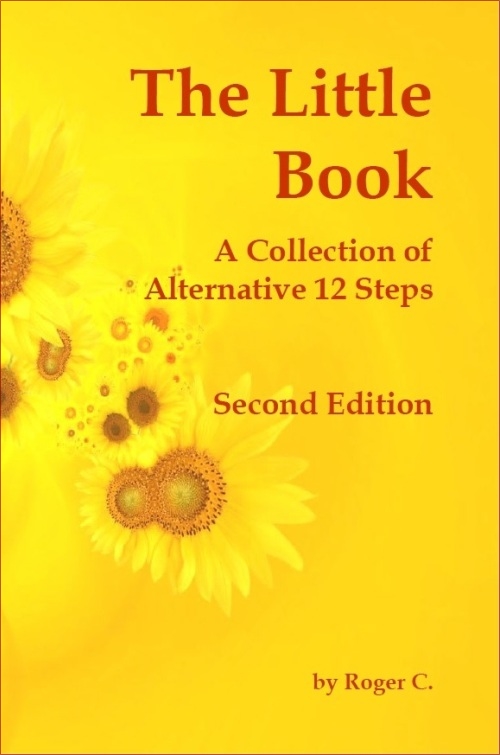

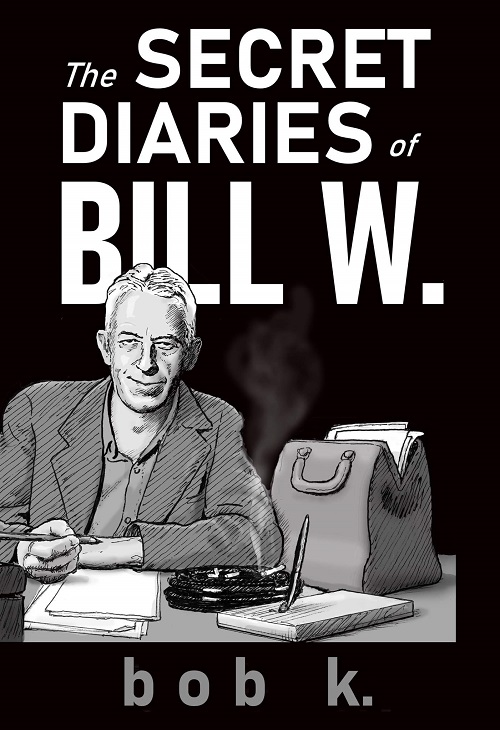




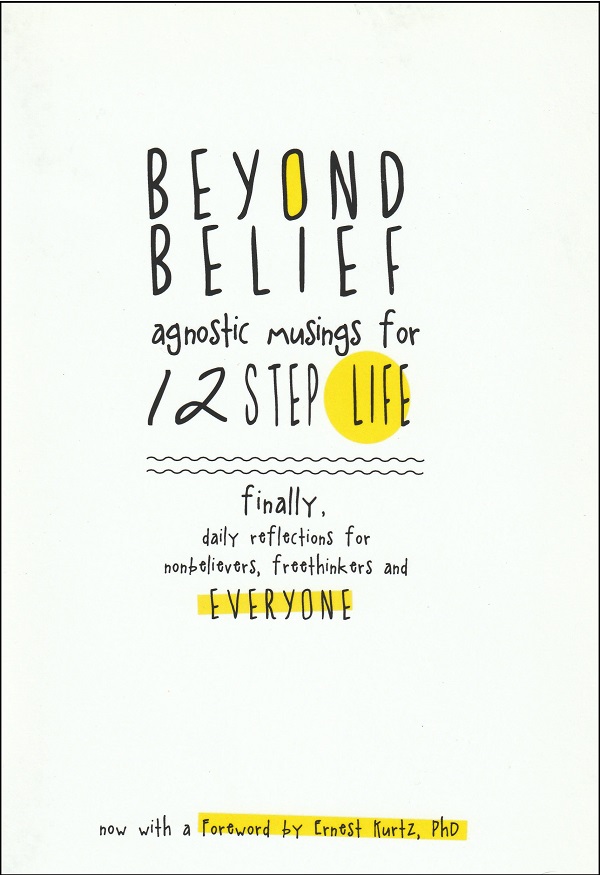

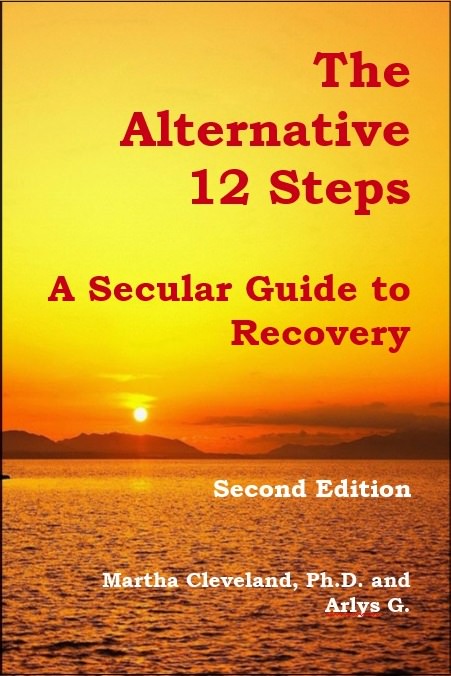




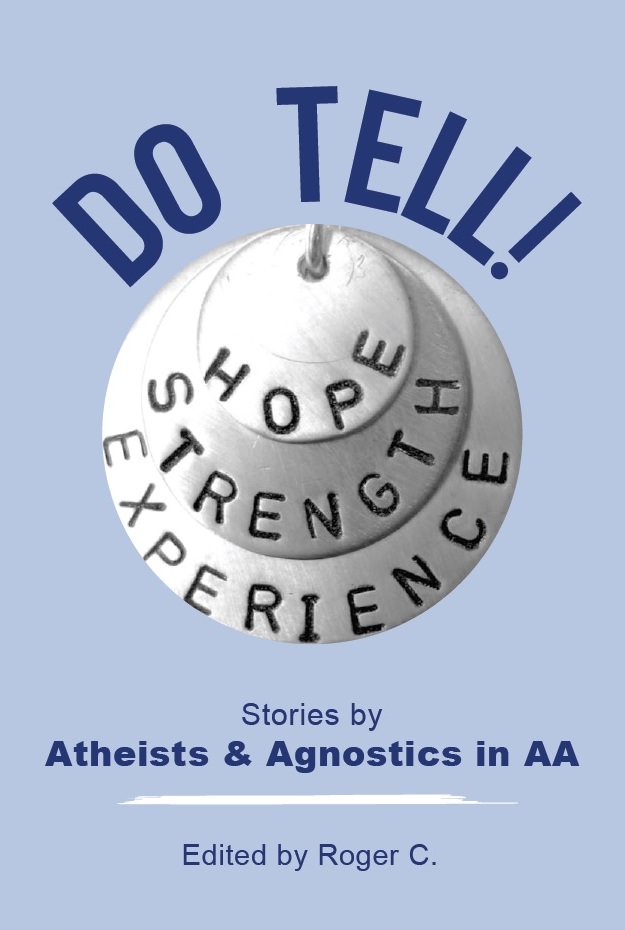







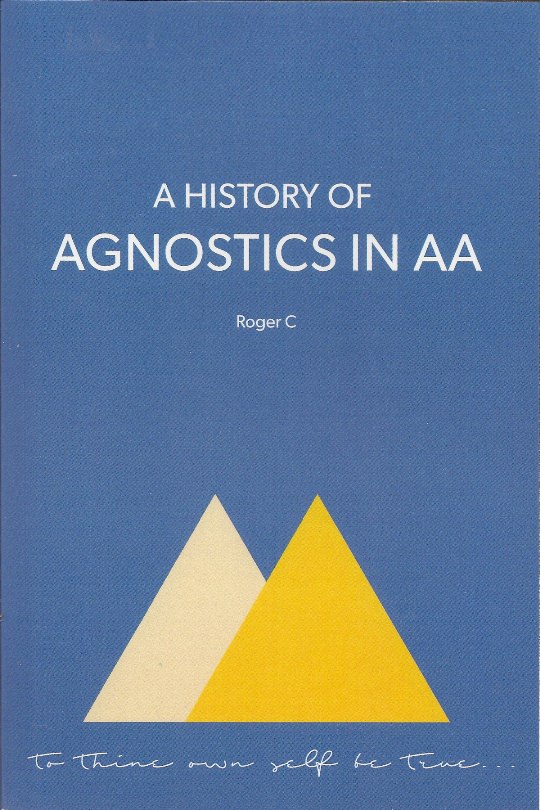
I have recently said much the same thing, albeit less eloquently, as your conclusion. Bill was constrained by his time and place, but was clearly more open-minded than most. I think he would, of course, have wanted AA to be more malleable than some – most in my neck of the woods – would have it. I mentioned in a comment late last week that it sometimes feels as if AA has become a religion of its own – one that seemingly requires you to be a theist – and is therefore less progressive than it should be considering its primary aim. I see this so much now that I have moved away from the rooms. Not away from my sober friends and support group, but with the meetings around me on Long Island becoming increasingly fundamentalist, I can’t bring myself to attend.
Thanks for this excellent thought-provoking article. You say:
Well, Bill’s work on Niacin was indeed his greatest contribution to humanity. Unfortunately his research on Niacin has been suppressed. But a couple of years back I found the three papers on Niacin on this site: DoctorYourself.com. These are “must read” Papers for any alcoholic who wants to recover.
After getting a majority for the alcoholic AA members on the GSO Board of Trustees in 1965, Bill W wrote his first Report on Niacin in 1966, giving in it the information that Bill had learned from his research. And Dr. Abram Hoffer says that Bill also got the Doctors in AA to conduct clinical studies on Niacin: Beyond Talk Therapy: New Frontiers in Addiction Treatment. The 2nd 1968 Report on Niacin gives the results of the clinical studies of the effects of Niacin on Alcoholism, Schizophrenia, Depression, Arthritis, Heart Problems etc., which shows that taking 3 to 6 grams of Niacin daily had helped 71% of the over 500 hard core treatment failure alcoholics to quit alcohol for over 2 years. That year in 1968, Linus Pauling – the founding father of Molecular biology and also the only person to have ever won two unshared Nobel Prizes including the Nobel Peace Prize – published his paper “Orthomolecular Psychiatry” in the Science magazine on treating psychiatric diseases only with the correct molecules – Vitamins, Amino Acids etc. – that are already present in the brain. In the 3rd Niacin Report, which was published posthumously, we are told that, “The scientific importance of this discovery was recognized by the brilliant Nobel Prize winning Professor, Linus Pauling, who termed this new development, Orthomolecular Psychiatry.” This is the reason why Bill must have wanted to be remembered for his work on Niacin.
But if all the psychiatric disorders and alcoholism were treated by Nutrition and Vitamins supplementation, it would cause a loss of trillions of dollars to the pharmaceutical and healthcare corporations – the annual global expenditure on healthcare is 6.5 trillion dollars. This is why they have seen to it that nobody finds out about Niacin and about Linus Pauling, the greatest thinker of the 20th Century.
Thanks, Thomas, as always an insightful piece.
It’s a bit like with Anna Jarvis, the woman who spent half her life getting Mothers’ Day recognized as a national holiday, and then spent the rest of her life fighting the commercial monster she had helped bring to life. But by then it had become too good a racket.
As for the racket of AA, one can wonder who gets what out of insisting on keeping it religious.
I guess that’s the trouble in this country, the US, that even when it isn’t even a money maker, as it indeed isn’t for AA, religion still is seen as such a glorious venture that those who perpetrate it can’t help themselves, and must foist it upon others, in spite of science, common sense, statistical evidence, and general population trends.
I’m just visiting Denmark, and while they do go through the same motions, reading how it works and recite the serenity prayer and all that, people don’t witness at length about all the great things their higher power has done for them. And it doesn’t even seem like parking spaces are any more plentiful or scarce here in Denmark than anywhere else.
No-one here seems to be particularly offended by the religious content of AA, and it’s kind of funny in a twisted way that it is so. In Denmark religion (Protestant Christianity) is a state religion. people have always been members by default, everyone going through the motions of getting baptized, confirmed, married, and buried, and really, no-one could care less. Religion was simply not important to the great mass of the Danish church’s members, and so, similarly, here, the religious content passes straight in one ear and out the other.
In the US on the other hand, people take their religion seriously, lots of factions waging war on each other, and claiming to possess the truth.
There has been talk of abolishing the state religion here, but as one sly politician said, we better not, if we do, all hell is going to break loose….
It’s an uphill battle in the US, but I’m glad we’re keeping up the good fight. Thanks again Thomas.
Great article Thomas. I just reread the chapter of the Big Book this morning with a sponsee. Therein, we are advised to ask a potential new member if he “would go to any extreme” to quit drinking. If he is not, we are advised that we may have to drop him until he is ready to do so. Similarly, shouldn’t AA be willing to go to any lengths to help a willing person to achieve sobriety? We are (most of us) not doctors or therapists but should not the book be revised to include information which points the new guy toward solutions which can very much help him or her? AA could help so many more people than it does if it made clear in its text that medicine and psychotherapy can help tremendously, especially for those more severely addicted. Bill W. should never be raised to the position of infallibility but his example of seeking and researching current progress in the field should forever be exalted.
Thanks Thomas. Very enlightening. May change my somewhat jaundiced view on Bill W. Also very interesting information on Niacin which I was unaware of.
Love this site.
Coupla things. Can anyone point me to the primary source of Huxley’s comment about Bill being the greatest social architect of the 20th century? The original reference is in Thomsen’s biography, but that’s a secondary source; he does not record where Huxley made the claim in writing or speech. I raised this point with AAhistorylovers which is full of AA historians, academics and AA anoraks, who argue over the placing of commas in the Big Book, but no-one could identify the primary source. And the reason that AA has not published more books on developments in the treatment field etc is because members have not asked for them. AA does not commission or produce publications in the orthodox way, proposals have to come up from the fellowship via groups’ delegates who make a Conference recommendation which is carried forward by the literature committee. So, if anyone wants a new book to be published by AA get busy no-one’s gonna do it for you.
Great article. Peronally I’ve long suspected that Bill might have been bi polar. Abandonment by his parents bolsters that theory since bi polar is considered to be exclusively hereditary and both of his parents sound like pretty good candidates. Also his periodic disappearances to combat depression over the years are consistent with that personality. Whatever he was, he was the right mad genius at the right time and we have all benefited greatly from his appearance on earth.